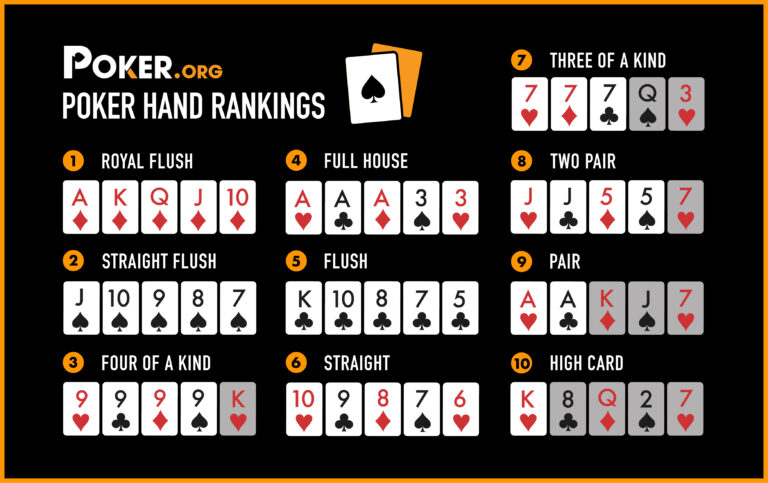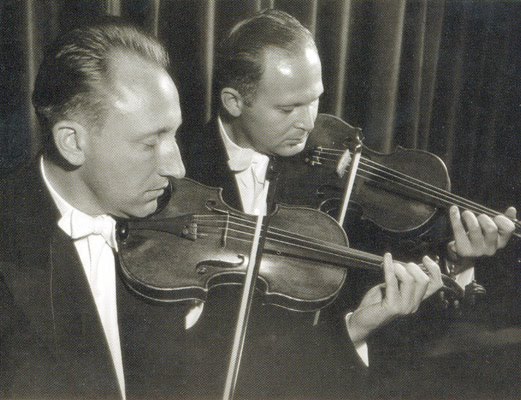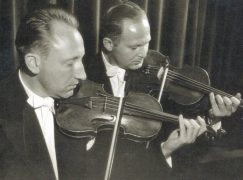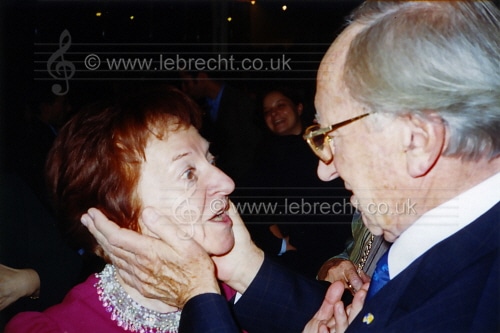
Thus the name of the game descended the French poque, which descended from the German pochen (‘to brag as a bluff’ lit.‘to knock’). It is commonly regarded as sharing ancestry with the Renaissance game of primero and the French brelan.
The card game of poker was developed in the United States at some point during the early 19th century, drawing its name and basic concept from much earlier European games. Since its early beginnings, poker has grown to become an extremely popular pastime throughout the world.
19th century

In the 1937 edition of Foster’s Complete Hoyle, R. F. Foster wrote: “the game of poker, as first played in the United States, five cards to each player from a twenty-card pack, is undoubtedly the Persian game of As-Nas.” There is evidence that a game called poque, a French game similar to poker, was played around the region where poker is said to have originated. Thus the name of the game descended the French poque, which descended from the German pochen (‘to brag as a bluff’ lit. ‘to knock’).[1] It is commonly regarded as sharing ancestry with the Renaissance game of primero and the French brelan. The English game brag (earlier bragg) clearly descended from brelan and incorporated bluffing (though the concept was known in other games by that time). It is quite possible that all of these earlier games influenced the development of poker as it exists now.
Poker itself originated in the late 18th century, and had probably spread throughout the Mississippi River region by 1800. It was played in a variety of forms, with 52 cards, and included both straight poker and stud. 20 card poker was a variant for two players (it is a common English practice to reduce the deck in card games when there are fewer players) The development of poker is linked to the historical movement that also saw the invention of commercial gambling.
English actor Joseph Cowel reported that the game was played in New Orleans in 1829, with a deck of 20 cards, and four players betting on which player’s hand was the most valuable. Jonathan H. Green‘s book, An Exposure of the Arts and Miseries of Gambling (G. B. Zieber, Philadelphia, 1843), described the spread of the game from there to the rest of the country by Mississippi riverboats, on which gambling was a common pastime. As it spread north along the Mississippi River and to the West during the gold rush, it is thought to have become a part of the frontier pioneer ethos.
Soon after this spread, the full 52-card French deck was used and the flush was introduced. The draw was added prior to 1850 (when it was first mentioned in print in a handbook of games). During the American Civil War, many additions were made including stud poker (the five-card variant), and the straight. Further American developments followed, such as the wild card (around 1875), lowball and split-pot poker (around 1900), and community card poker games (around 1925).
Krebbers Herman – Olov Theo

DEATH OF AN ICONIC CONCERTMASTER, 94
Krebbers was appointed joint concertmaster at the Residentie Orchestra in The Hague in 1951 together with his close friend Theo Olof. The pair moved together in 1962 to preside over the Concertgebouw strings. They were the best frontline partnership in Europe.

Olof stepped down in the early-1980s, around the time that Krebbers’ activities were restricted as the result of an accident.
Krebbers had been a formidable soloist. His recording of the Beethoven concerto with Haitink was for many years the go-to recording for first-time listeners, accurate and passionate in equal measure.
He went on to become a sought-after teacher. Frank Peter Zimmermann was among his star pupils.

Krebbers with Wanda Wilkomirska, who died this week
UPDATE: Concertgebouw announcement.
https://slippedisc.com/2018/05/death-of-an-iconic-concertmaster-94/
O Lof… O Love, olo V…. Schmuckler….
Hij werd geboren in 1924 in Bonn als Theodor Olof Wolffberg. Hij was de zoon van Heinz Wolffberg, warenhuisemployee en amateurtoneelspeler, en de violiste en viooldocente Elvira Wolffberg-Schmuckler Zij ontving haar diploma aan het toenmalige conservatorium (nu Hochschule für Musik und Tanz) in Keulen. Na de oorlog verkreeg hij in Nederland bij Kon. Besluit van 1 juni 1954 wijziging van geslachtsnaam Wolffberg in Olof (waardoor zijn volledige naam werd: Theodor Olof). Hij was tweemaal getrouwd: na zijn scheiding van Wibbina Luthera van Steeden (1925) hertrouwde hij in 1971 met de violiste jkvr. Eleonore Johanna Elias (1939).
Olof week in 1933 met zijn moeder uit voor het toenmalige nationaalsocialistische Duitse regime naar Nederland. Hij gaf zijn eerste concert met het Concertgebouworkest op elfjarige leeftijd, onder leiding van Bruno Walter.
Net als Herman Krebbers, Lola Mees, Willem Noske, Kees Kooper, Davina van Wely en vele andere bekende Nederlandse violisten was Olof leerling van Oskar Back. Hij volgde diens lessen aan het Amsterdams Muzieklyceum aan het Albert Hahnplantsoen. Tijdens de Tweede Wereldoorlog moest hij, als Jood, onderduiken. Zo was hij twee weken in Bilthoven ondergedoken bij de schrijfster Elisabeth de Meijier.
In 1951 won Theo Olof de vierde prijs bij de Koningin Elisabethwedstrijd in Brussel. Het duurde tot 2015 (met Stephen Waarts) voor er nog eens een Nederlandse violist in de finale kwam van de Koningin Elisabethwedstrijd (in 1951 waren het er zelfs twee, de andere laureaat was Kees Kooper).
Olof was van 1950 tot 1970 concertmeester van het Residentie Orkest onder Willem van Otterloo en nadien tot 1985 bij het Concertgebouworkest onder Bernard Haitink. Hij deelde deze posities bij beide orkesten voor het grootste deel (1950-1962 resp. 1970-1980) met Herman Krebbers. Zij combineerden hun positie bij deze orkesten met een carrière als solist in binnen- en buitenland. Ook speelden zij vaak samen, vooral in werken van Bach (Dubbelconcert BWV 1043), Bartók (44 duo‘s) en de Nederlandse componisten Henk Badings en Géza Frid, die ieder een dubbelconcert aan hen opdroegen.
Theo Olof was tot 1982 tevens hoofdleraar aan het Koninklijk Conservatorium in Den Haag. Daarnaast schreef hij over zijn leven als violist. Vooral het pocketboek vol anekdoten Daar sta je dan, verschenen in 1958, werd vele malen herdrukt. Ook zocht hij naar het verloren gewaande instrument de luthéal, om Tzigane van Ravel te kunnen uitvoeren zoals de componist zich dat oorspronkelijk had voorgesteld. Hij vond het enige nog bekende exemplaar ten slotte in het MIM in Brussel, ingebouwd in een Pleyel–vleugel uit 1911.
https://nl.wikipedia.org/wiki/Theo_Olof


Generation R Next – Optimaal Opgroeien

https://bbo-bridge-base-online.softonic.nl/android
Neue Mega-Brücken in Deutschland: Kann man hier wohnen?
Überall auf der Welt entstehen beeindruckende Mega-Brücken. Doch wie sieht es bei uns in Deutschland aus? In diesem Video stelle ich euch neue Megaprojekte und Ideen vor. Von der Seilbahn der Köhlbrandbrücke, über die Kochertalbrücke bis hin zur Green Bridge in Düsseldorf für über 700 Millionen Euro. Viel Spaß!
–
Mein Mikrofon und co: https://amzn.to/43XwezS (Affiliate-Link)
–
Inhaltsverzeichnis:
0:00 Brückensprenung
0:32 Neue Mega-Brücken Deutschland und weltweit
01:46 Ruyi Bridge
02:24 Längste und höchste Glasbodenbrücke der Welt
02:59 Veluwemeer-Aquädukt
03:27 Elbbrücke in Hamburg
03:54 Rakotzbrücke
04:39 Teuerste Brücke der Welt
05:30 Deutschlands höchste Eisenbahnbrücke
06:12 Die höchsten und größten Brücken weltweit
06:36 Brücke nach Sizilien
07:24 Viadukt von Millau
07:33 Beipanjiang-Brücke
08:00 Kochertalbrücke
09:36 Skywalk in Willingen
10:09 Köhlbrandbrücke Seilbahn
11:55 Leverkusener Rheinbrücke
12:50 Green Bridge in Düsseldorf
Überall auf der Welt entstehen beeindruckende Mega-Brücken. Doch wie sieht es bei uns in Deutschland aus? In diesem Video stelle ich euch neue Megaprojekte und Ideen vor. Von der Seilbahn der Köhlbrandbrücke, über die Kochertalbrücke bis hin zur Green Bridge in Düsseldorf für über 700 Millionen Euro. Viel Spaß! – Mein Mikrofon und co: https://amzn.to/43XwezS (Affiliate-Link) – Inhaltsverzeichnis: 0:00 Brückensprenung 0:32 Neue Mega-Brücken Deutschland und weltweit 01:46 Ruyi Bridge 02:24 Längste und höchste Glasbodenbrücke der Welt 02:59 Veluwemeer-Aquädukt 03:27 Elbbrücke in Hamburg 03:54 Rakotzbrücke 04:39 Teuerste Brücke der Welt 05:30 Deutschlands höchste Eisenbahnbrücke 06:12 Die höchsten und größten Brücken weltweit 06:36 Brücke nach Sizilien 07:24 Viadukt von Millau 07:33 Beipanjiang-Brücke 08:00 Kochertalbrücke 09:36 Skywalk in Willingen 10:09 Köhlbrandbrücke Seilbahn 11:55 Leverkusener Rheinbrücke 12:50 Green Bridge in Düsseldorf
